
The Kunsthistorisches Museum is an art museum in Vienna, Austria. Housed in its festive palatial building on the Vienna Ring Road, it is crowned with an octagonal dome. The term Kunsthistorisches Museum applies to both the institution and the main building. It is the largest art museum in the country and one of the most important museums worldwide.
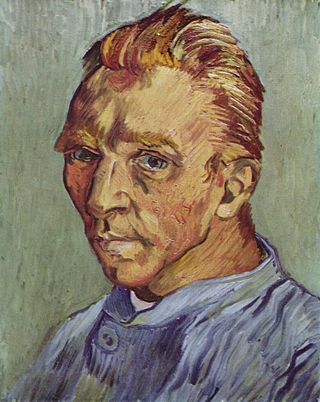
The portraits of Vincent van Gogh (1853–1890) are the self-portraits, portraits of him by other artists, and photographs—one of which is dubious—of the Dutch artist. Van Gogh's dozens of self-portraits were an important part of his œuvre as a painter. Most probably, van Gogh's self-portraits are depicting the face as it appeared in the mirror he used to reproduce his face, i.e. his right side in the image is in reality the left side of his face.
The Aarne–Thompson–Uther Index is a catalogue of folktale types used in folklore studies. The ATU Index is the product of a series of revisions and expansions by an international group of scholars: originally composed in German by Finnish folklorist Antti Aarne (1910), the index was translated into English, revised, and expanded by American folklorist Stith Thompson, and later further revised and expanded by German folklorist Hans-Jörg Uther (2004). The ATU Index, along with Thompson's Motif-Index of Folk-Literature (1932) – with which it is used in tandem, is an essential tool for folklorists.

Grimms' Fairy Tales, originally known as the Children's and Household Tales, is a German collection of fairy tales by the Grimm brothers or "Brothers Grimm", Jacob and Wilhelm, first published on 20 December 1812. Vol. 1 of the first edition contained 86 stories, which were followed by 70 more tales, numbered consecutively, in the 1st edition, Vol. 2, in 1815. By the seventh edition in 1857, the corpus of tales had expanded to 200 tales and 10 "Children's Legends". It is listed by UNESCO in its Memory of the World Registry.
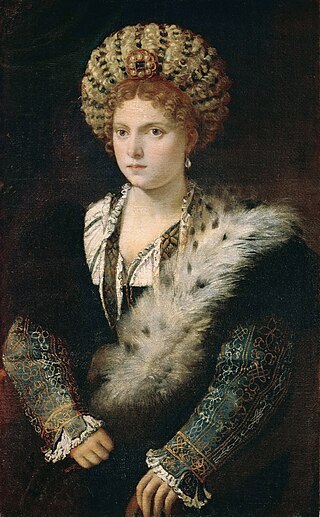
Isabella in Black is a portrait of a young woman by Titian. It can be dated to the 1530s and is in the Kunsthistorisches Museum in Vienna. The artist and the date are undisputed. Beyond the museum documentation, there are repeated doubts about the person depicted.
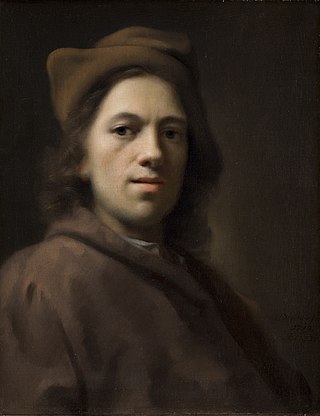
Balthasar Denner was a German painter, highly regarded as a portraitist. He painted mostly half-length and head-and-shoulders portraits and a few group portraits of families in interiors. Usually Denner concentrated on the face; clothes and paraphernalia were done by other painters or later his daughter. His chief peculiarity consisted in the fineness of his mechanical finish, which extended to depicting even the almost invisible furze of hair growing on smooth skin. He is particularly noted for his heads of old men and women.

La Bella is a portrait of a woman by Titian in the Palazzo Pitti in Florence. The painting shows the subject with the ideal proportions for Renaissance women. In parallel the stringent composition corresponds to Titian's real portraits. The work can be dated by a letter about "that portrait of that woman in a blue dress" in May 1536.

Portrait of a Man is an oil on canvas painting by Titian (950,2x45,1 cm), dating to around 1512. Wilhelm von Bode attributed it to Giorgione and Richter to Palma il Vecchio, but Longhi, Suida, Phillips, Morassi, Pallucchini and Pignatti all attributed it to Titian.

Saint Margaret and the Dragon is the title shared by two paintings of Saint Margaret by the Renaissance painter Raphael, both executed in about 1518. One is held in the Kunsthistorisches Museum in Vienna, the other in the Louvre in Paris.

The Triple Portrait of a Goldsmith is an oil-on-canvas painting by the Italian Renaissance artist Lorenzo Lotto, created c. 1530 and now held in the Kunsthistorisches Museum in Vienna. It has previously been attributed to other artists such as Titian until documentary evidence was found linking it to a painting of the same description in various collection inventories. In 1627 it was in the collection of Vincenzo II Gonzaga, who sold it to Charles I of Great Britain, upon whose execution it was auctioned to Philip IV of Spain. It eventually entered the Habsburg collections in Austria via inheritance – inventories show it has been in Vienna since at least 1733.

Portrait of a Young Man is a 32×26 cm oil on panel portrait painting by Giovanni Bellini, dating to c.1490–1495 and now in the Louvre in Paris, to whom it was given by comte Albert de Vandeul in 1902.

Portrait of a Young Man is a c.1500 oil on panel portrait of an unknown subject by Giovanni Bellini. It measures 31×25 cm and is now in the National Gallery of Art in Washington.
Daniel Woge (1717-1797) was a German draughtsman and painter.

The Roverella Altarpiece was a religious painting by Cosmè Tura completed during 1470–1474 using oil and egg-tempera on poplar panel work, commissioned by abbot and cardinal Bartolomeo Roverella for San Giorgio fuori le mura in Ferrara in memory of his brother bishop Lorenzo Roverella. It was one of the most significant works of the artist and of the Ferrara Renaissance in general. It was damaged in an explosion in 1709 and moved out of the church. It is now dismembered and their panels split up between several museums.
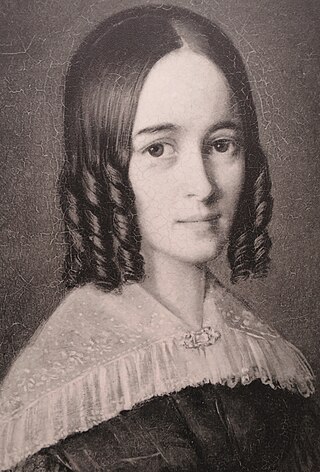
Marie Magdalene Elisabeth Hassenpflug was a German author whose versions of various folk tales were an important source for the collection of tales by the Brothers Grimm. She is best known for her versions of "Little Red Riding Hood" (Rotkäppchen), "Sleeping Beauty" (Dornröschen), and "Snow White" (Schneewittchen).

Self-Portrait is a small oil-on-panel painting by the Italian artist Sofonisba Anguissola, signed and dated 1554 on the open book held by the artist. The portrait is now in the Kunsthistorisches Museum in Vienna.

The Madonna and Sleeping Child with the Infant St John the Baptist or Il Silenzio is oil on canvas painting by Annibale Carracci, now in the Royal Collection. It is currently on display in Hampton Court Palace.
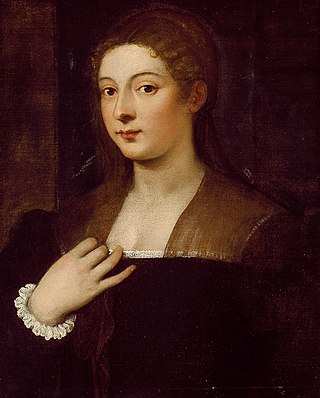
Portrait of a Lady, formerly known as Portrait of Giulia Gonzaga, is an oil painting by, or possibly after, Titian. It is dated, broadly, to the period 1525–1565. The painting is in the collection of the Art Institute of Chicago.
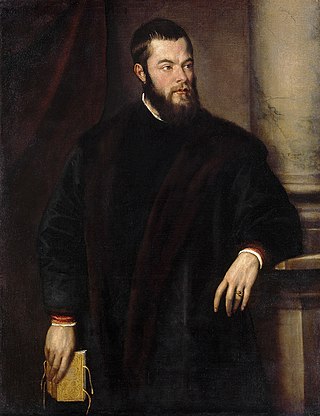
Portrait of Benedetto Varchi, also called Portrait of a Man, is an oil painting by Titian. It was painted in around 1540, and hangs today in the Kunsthistorisches Museum in Vienna.

















